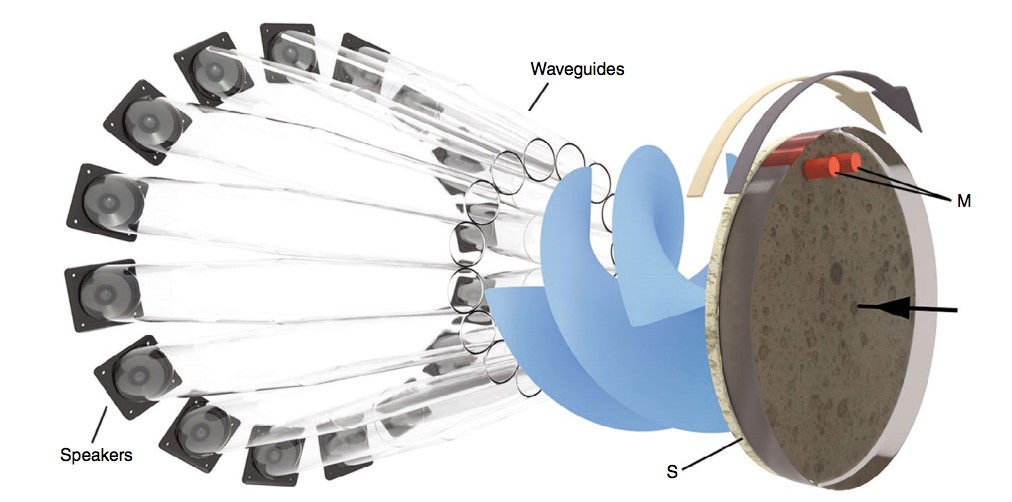Amplification of Rotating Waves Published in Nature Physics
Published: 12 October 2020
The 2020 Nobel prize in physics was awarded for the discovery of black hole formation and the discovery of a black hole at the centre of our galaxy.
The 2020 Nobel prize in physics was awarded for the discovery of black hole formation and the discovery of a black hole at the centre of our galaxy. Roger Penrose, one of the three recipients, has a remarkable legacy of research in the field of black hole physics beyond the mdoelling that predicted their formation. One important example is the discovery that it is possible to extract energy from the rotational energy of a black hole. Penrose’s reasoning relies on the fascinating concept that waves trapped inside the black hole region will have negative energy and any resulting reflected (positive frequency) component must be amplified in order to balance the loss of negative energy inside the black hole. This concept was later extended by Zel’dovich to the case of a rotating metallic cylinder that will absorb light at low frequencies but will reflect and amplify light at frequencies high enough such that the rotational Doppler shifted frequency (or energy) of the waves becomes negative. We observed this exact same effect for the first time by using acoustic waves transmiitted through a rotating and absorbing disk, showing a clear amplification of the sound waves only when the conditions predicted by Zel’dovich are satisfied. We have since extended this idea to the case of electromagnetic waves interacting with a levitated superconducting sphere and one day, we may even be able to observe amplification of quantum fluctuations. See also our YouTube video for more details: https://youtu.be/ES2VxhRAkUM

Amplification of waves from a rotating body, M. Cromb, G.M. Gibson, E. Toninelli, M.J. Padgett, E.M. Wright, D. Faccio, Nat. Phys. 16, 1069 (2020)
First published: 12 October 2020
<< News

